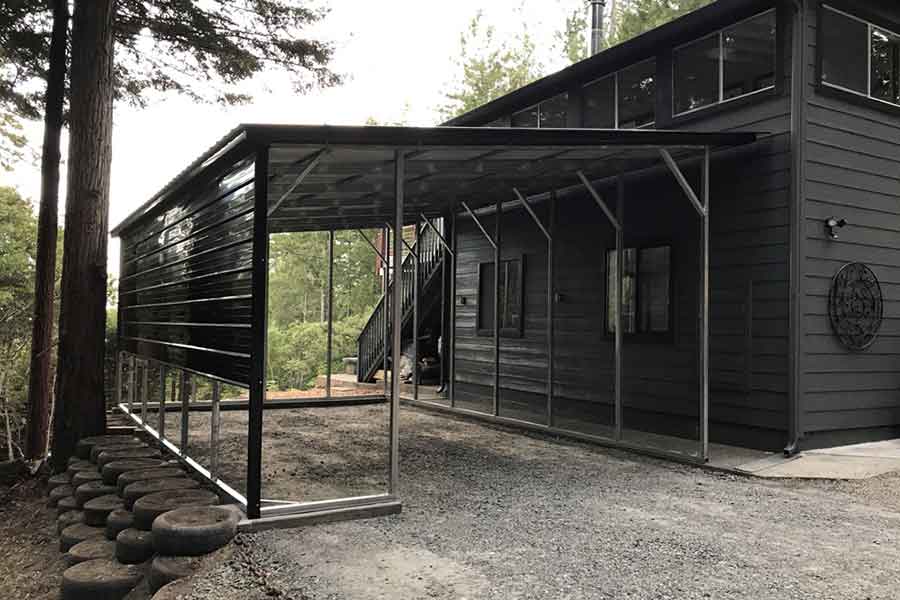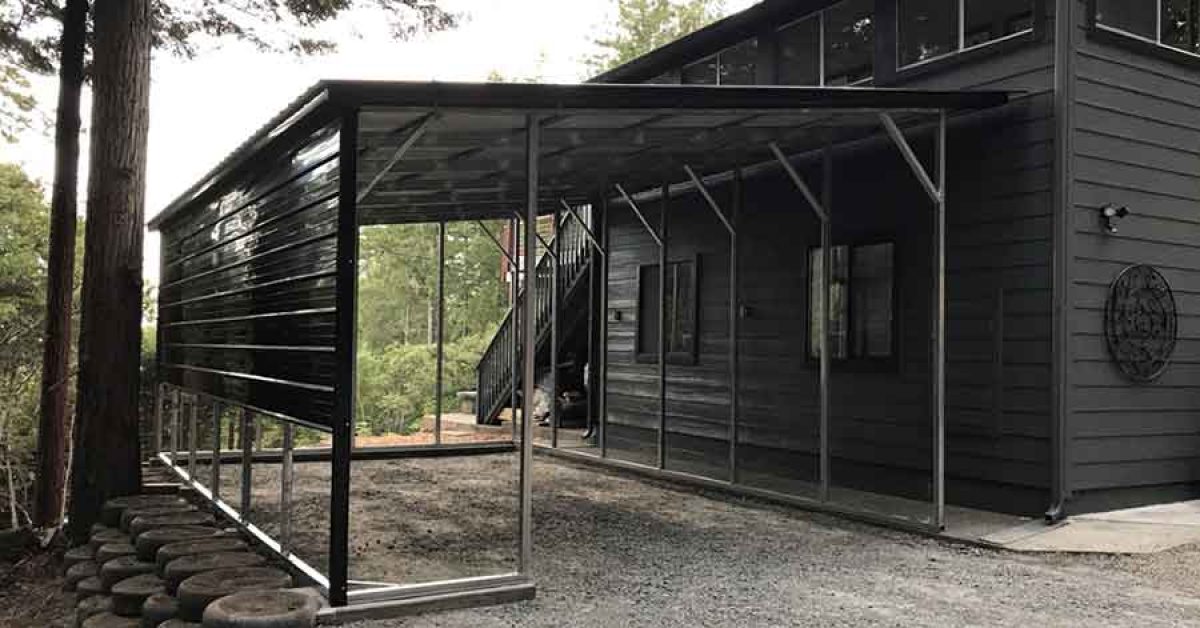When discussing outdoor structures, the conversation often turns to metal lean-tos. These structures are becoming increasingly popular due to their versatility and numerous applications. Metal lean-tos have the ability to provide a wide range of benefits, from protection from the elements to storage and additional living space. This blog post will explore the various advantages of metal lean-tos, as well as the various considerations to be made when building or purchasing a metal lean-to. It will look at the various types of metal lean-tos, their applications, and the various materials used in their construction. Finally, it will highlight the important points to consider when purchasing or constructing metal lean-tos for your own property. Whether you’re looking for additional storage space or shelter from the elements, metal lean-tos can provide the solution. Read on to learn more about the potential benefits and considerations of metal lean-tos.
1. Benefits of a Metal Lean-To
Metal lean-tos are a great way to add a functional, stylish addition to any property. These versatile structures are a great option for adding a useful workspace or storage space to your outdoor area. Not only do metal lean-tos look great, but they also have several other benefits. Metal lean-tos are durable and long-lasting, and require minimal maintenance. Additionally, they are a great option for those looking for a cost-effective and eco-friendly solution. Metal lean-tos are also easy to install and remove, and can be adapted to fit any space.
2. Types of Metal used
Lean-tos made of metal have become increasingly popular for outdoor structures such as patios, decks, and storage buildings. Metal lean-tos are stronger, more durable, and more versatile than traditional wood-framed lean-tos. Metal lean-tos also require less maintenance and can be used in a variety of environments. There are two main types of metal used in metal lean-tos: steel and aluminum. Both metals offer strength and durability, but each has its own unique benefits. Steel is extremely strong, but can be heavier and more expensive than aluminum. Aluminum is lightweight, more affordable, and highly corrosion resistant. When shopping for a metal lean-to, it’s important to consider the specific needs of your environment, budget, and requirements.
3. Design Options
When it comes to designing metal lean-tos, there are three main options: freestanding, attached, and semi-attached. Freestanding metal lean-tos are self-supporting structures with no need for external bracing. They can be more easily moved and constructed. Attached metal lean-tos are secured to a wall or building, offering extra support and stability. Finally, semi-attached metal lean-tos are typically found in commercial settings such as shopping centers and gas stations. They are secured to the ground, but do not require bracing against an external structure. Each design option has its own merit, so it’s important to consider the optimal way to construct and install metal lean-tos for your specific needs.
4. Building Codes and Regulations
When building metal lean-tos, it is important to be aware of any applicable building codes and regulations that must be adhered to. These codes and regulations can vary from state to state, so it is important to check with your local building authority to make sure you are up to date on all local requirements. Generally speaking, metal lean-tos must meet certain structural requirements to ensure they are safe and durable. It is also important to consider potential wind and snow loads when constructing a metal lean-to, as these can affect the stability and integrity of the structure. Compliance with all applicable building codes and regulations is essential for successfully building metal lean-tos.
5. Maintenance and Care Tips
Regular maintenance and care of your metal lean-to can ensure that it provides you with years of service. Here are five tips to keep in mind. First, inspect the structure for any rust, corrosion, or other signs of wear and tear. If any of these are present, address them immediately. Second, clean the structure with a mild detergent and water, then rinse with fresh water. Third, apply a thin coat of rust-preventive paint to the structure. Fourth, check the bolts, screws, and nuts for any looseness and tight them as necessary. Finally, apply a coat of sealant to the roof to prevent water damage. Follow these maintenance and care tips to maintain the integrity of your metal lean-to.
In conclusion, metal lean-tos provide a great solution for those who need an inexpensive, durable, and low-maintenance cover for their outdoor area. Whether you need a simple structure to protect your garden from the elements or an extra storage area for items, a metal lean-to can provide the perfect solution. With the right design and materials, you can be sure that your new metal lean-to will last for years to come.


